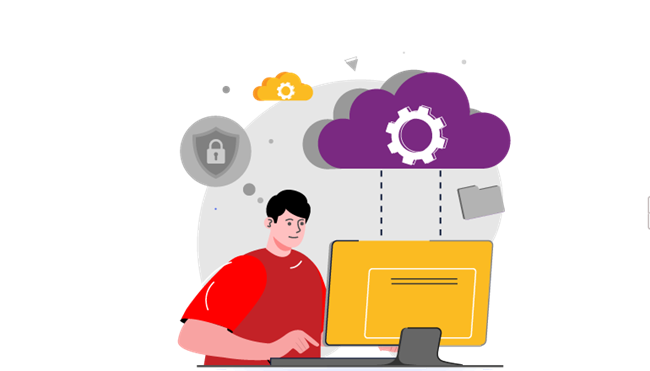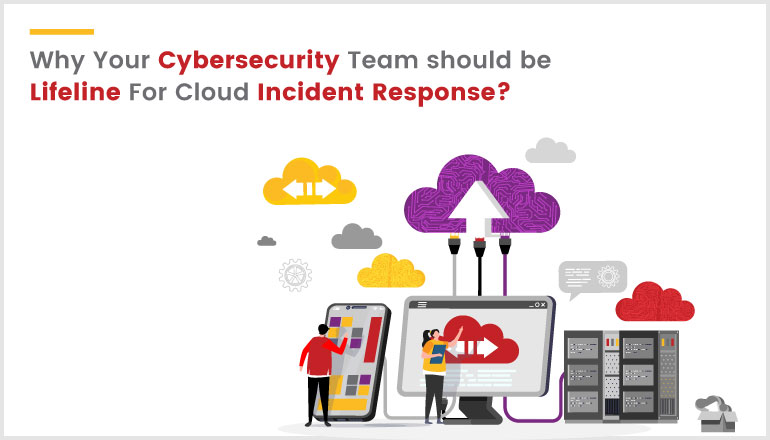Introduction
In Today's cloud-dominated environment, businesses are experiencing a profound transformation in how they operate and store their critical data. While the cloud offers unprecedented scalability, cost-efficiency, and accessibility, it also introduces new cybersecurity challenges. As organizations increasingly migrate their operations to the cloud, the need for a robust incident response and recovery strategy cannot be overstated. The purpose of this blog is to investigate the crucial role that cybersecurity teams play in managing incidents and ensuring the resilience of cloud-based operations. Discover why your cybersecurity team is your lifeline in the cloud era.
Understanding Incident Response Tiers in cloud
Preventive Measures for Cloud Security
Tier 1 is focused on prevention and involves implementing measures that reduce an organization’s risk profile, such as patching software or installing network firewalls. These preventive measures are designed to stop attacks before they reach critical systems.
1. Patch Management: Patch management is a crucial aspect of Tier 1 security. It involves the routine and systematic process of keeping software and systems up to date with the latest patches and updates. This practice is essential for addressing known vulnerabilities, enhancing system security, and reducing the risk of potential cyber threats.
2. Network Firewalls: In Tier 1 security, a key focus is on deploying and configuring network firewalls. These serve as vital gatekeepers, regulating both inbound and outbound traffic, and thus narrowing the exposure to potential threats.
3. Security Policies: Another crucial aspect of Tier 1 security is the development and enforcement of security policies. These policies are designed to create a framework of rules and access controls, ensuring that only authorized personnel gain entry to cloud resources while deterring unauthorized access.
Detecting Suspicious Activity in the Cloud
Tier 2 focuses on detection, it includes activities like monitoring for suspicious activity or analyzing logs for unusual behavior. Security teams use a variety of tools and techniques to detect potential intrusions so they can act before data is compromised.
1. Continuous Monitoring: At Tier 2 security, an essential practice is the ongoing surveillance of cloud systems and services. This involves vigilant oversight to detect and respond to any abnormal or suspicious activities.
2. Intrusion Detection Systems (IDS): In Tier 2 security, robust security measures include the deployment of Intrusion Detection Systems (IDS). These sophisticated tools and technologies are instrumental in recognizing potential intrusions and threats.
3. Log Analysis: Analyzing logs from diverse cloud services is a pivotal activity in Tier 2 security. By scrutinizing log data, security teams can identify patterns that might signify security issues and swiftly address them.
Diagnosing and Assessing Cloud Security Threats
Tier 3 teams begin the process of diagnosing an attack by gathering evidence about its nature and scope and determining what damage has been done. This stage requires significant technical expertise in order to properly assess the situation and develop strategies for mitigating the risks posed by security breaches.
1. Forensic Analysis: In Tier 3, the focus shifts to forensic analysis, which involves the systematic collection and preservation of evidence pertaining to the security incident. This is a critical step in understanding what transpired.
2. Threat Assessment: Tier 3 security involves assessing the threat's severity and potential impact on the organization. This analysis aids in gauging the extent of the security incident.
3. Mitigation Planning: In Tier 3 security, the emphasis is on developing comprehensive strategies to mitigate the threat and prevent any further damage. This includes planning and executing measures to safeguard against future incidents.
Responding and Recovering in Cloud Security
Tier 4 organizations must implement appropriate responses aimed at minimizing further damage caused by malicious actors while simultaneously recovering any lost data or resources if possible. The goal here is not only restoring functionality but also ensuring that similar incidents do not recur in the future through improved security practices and procedures
1. Incident Response: In Tier 4 security, the primary focus is on the execution of a well-structured incident response plan. This plan is designed to effectively contain and mitigate the security incident.
2. Data Recovery: Tier 4 security involves the crucial task of data recovery. This entails the restoration of lost or compromised data and resources, ensuring business continuity.
3. Post-Incident Analysis: Following an incident, Tier 4 emphasizes a comprehensive post-incident analysis. This process involves an evaluation of the incident response procedures, identification of areas for enhancement, and the implementation of necessary changes to bolster future incident handling.

Responding to a Cloud Security Incident
After a cloud security incident, it's crucial to figure out how and why it happened. Teams analyze logs and evidence to identify the attackers and their methods. This helps improve defenses against future incidents. Once the attack method is known, steps are taken to limit any harm caused. Depending on the data affected, affected parties may be notified, and credit monitoring services provided. Backup policies are reviewed to ensure data recovery readiness. After addressing the incident, organizations should inform relevant authorities, such as law enforcement or national cybersecurity centers. They often offer additional support, especially in cases targeting government networks or large businesses spanning multiple jurisdictions.
Recovery After an Incident
After addressing a security incident, organizations must take preventive steps to avoid future occurrences. This includes enhancing authentication methods, access controls, and staying updated with software patches. Disaster recovery plans should be reviewed and updated as needed based on the incident. Businesses should conduct a post-incident review, gathering feedback from stakeholders and analyzing technical logs to identify areas for improvement. A communication plan is essential. It ensures affected parties are informed of actions taken, including data breach notifications, and that relevant entities such as law enforcement or regulators are notified in compliance with applicable laws and regulations.
The LAPSUS$ Attack:
The LAPSUS$ attack is a recent cyber threat that targeted high-profile organizations. It involved breaching their systems, stealing valuable data, and sometimes using ransomware to lock that data and demand a ransom or threaten exposure. This attack underscores the need for strong incident response capabilities to minimize damage and protect against evolving cyber threats.
Conclusion
In conclusion, cloud security incidents can harm organizations without proper preparation. To stay safe, implement security tools, regularly test them, and create an incident response plan. Keep up with best practices like strong passwords and two-factor authentication to prevent unauthorized access. With these measures, organizations can respond effectively to cloud security incidents.

